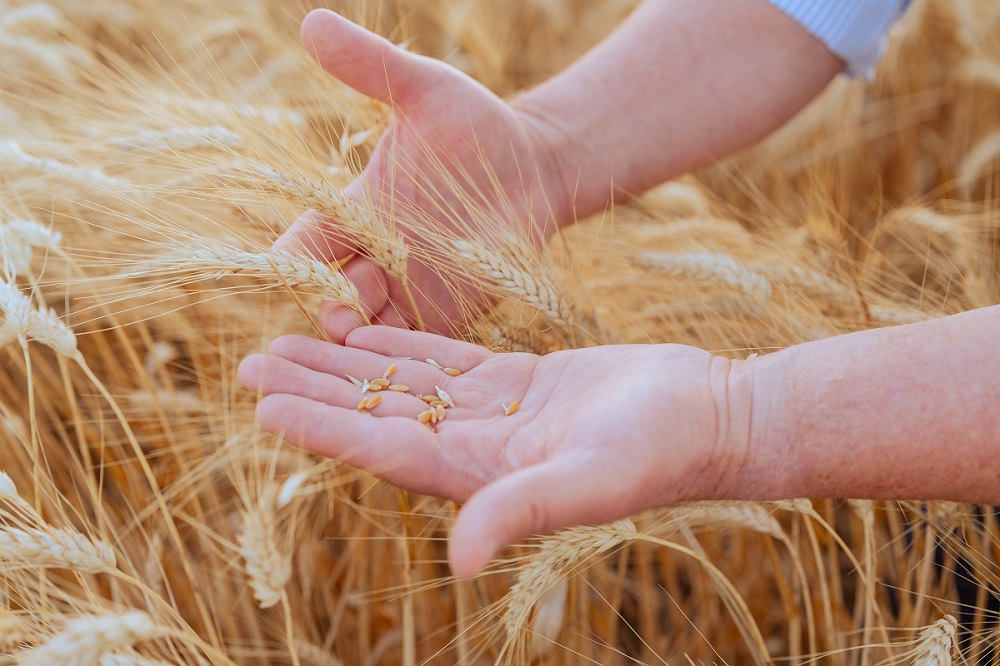Wheat is one of the oldest and most important symbols of Mediterranean agriculture. Its production cycle goes through several key stages, from sowing to ripening, up to the crucial moment of harvesting. This final stage is divided into two distinct yet closely connected operations: reaping, which is the cutting of ripe ears, and threshing, which allows the separation of the grains from the straw. These two steps, even today with modern tools, retain a deep connection to rural tradition.
Indice
When is wheat harvested
Wheat is harvested during a period that can slightly vary depending on the climate and the variety grown. Generally, in Southern Italy, harvesting starts in early June, while in Central-Northern Italy it takes place between June and July. The harvest time is determined by the ripeness of the ears: the golden color, the dryness of the stalk, and the hardness of the grain are all signs that the time for harvesting has come.
Wheat reaping
Reaping consists of cutting ripe ears directly in the fields. It was once done manually with a sickle, involving slow and repetitive movements; today, most farms use modern combine harvesters that perform both the cutting and grain separation automatically.
The wheat harvesting period
The ideal time for reaping is when wheat has reached so-called physiological maturity: the ears are dry, the grains are hard, and the plant has lost all its moisture. Harvesting too early or too late can compromise the quality of the grain or increase the risk of product loss due to bad weather or lodging of the ears.
Wheat threshing
After reaping comes threshing, the process of separating the grains from the ears and straw. In the past, this was done using simple tools such as flails or by beating the ears against hard surfaces. Today, this step is integrated into modern combine harvesters. The result is a clean grain, ready to be dried, stored, and then processed into flour or other derived products.
100% Italian wheat for healthy eating
Our wheat is grown in Puglia with care and natural methods, completely free from pesticides, glyphosate, and Genetically Modified Organisms. Every ear is the result of sustainable agriculture, where respect for the land and its rhythms is an integral part of the production process. The choice to grow clean, healthy wheat continues into the processing phase: we do not add chemical additives and, above all, we do not remove the wheat germ. This is how èViva flour is born: a “living” flour in the truest sense, made from whole grains, carefully milled to preserve their structure, strength, and nutritional richness. The result is a pure, digestible, and naturally fragrant product that retains all the original qualities of the grain, including the presence of the germ, a valuable source of vitamins, minerals, and antioxidants.
èViva pasta: authentic flavor, quality you can feel
Our èViva pasta is made from the same high-quality wheat grown in Puglia, rich in protein and selected to produce a naturally fragrant, vibrant, and nutritious semolina.
What makes it unique is the presence of the wheat germ, a noble part of the grain usually removed in industrial processes, but which we choose to preserve for its high nutritional value and organoleptic properties.
The wheat germ gives the pasta more flavor, a strong aroma, and extraordinary digestibility.
Artisanally crafted, bronze-drawn, and slowly dried at low temperature, èViva pasta is the authentic expression of our land and of a conscious, wholesome diet.
Choose èViva flour and bring the true taste of nature to your table
Choosing èViva flour and pasta means choosing excellence and the authentic flavor of Apulian wheat: a 100% natural product, free from pesticides and additives.
Try the difference of a living flour, rich in nutrients, perfect for every recipe.
Order now and rediscover the true taste of wheat.

